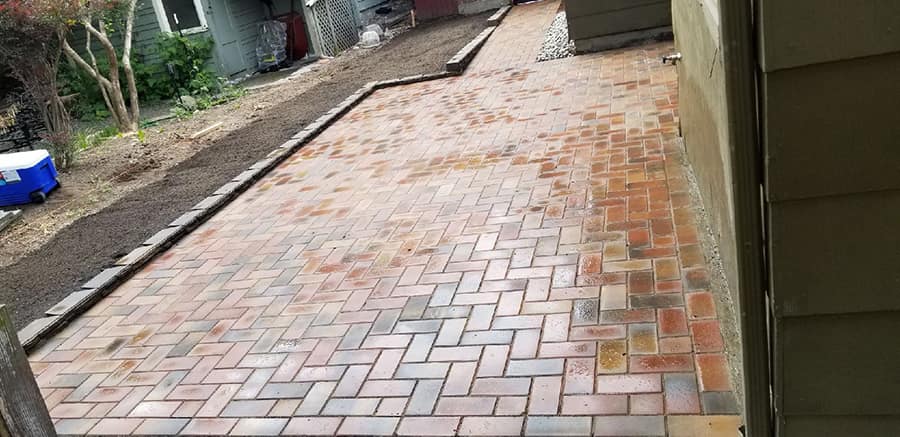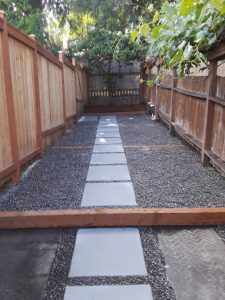Resanding Pavers: A Simple Guide to Reviving Your Outdoor Spaces
Today, we’re diving into a crucial task that can restore the beauty and stability of your paver patio, walkway, or driveway: resanding pavers. If the sand between your pavers has worn away over time, this guide will walk you through the process step-by-step. Let’s get your outdoor space looking fresh again!
What Are Pavers and Why Should You Resand Them?
Pavers are the durable, versatile stones, bricks, or concrete slabs that make up beautiful patios, driveways, and walkways. Over time, however, the sand that fills the joints between these pavers can wash away due to rain, foot traffic, or general weathering. When this happens, it’s time to resand your pavers to ensure they stay in place, maintain a neat appearance, and keep weeds at bay.
Benefits of Resanding Your Pavers
Here’s why resanding is worth the effort:
- Stability: Keeps pavers secure, preventing them from shifting or loosening over time.
- Aesthetics: Fresh sand makes the pavers look new again, enhancing the overall appearance of your yard.
- Weed Prevention: Filling the joints with sand helps prevent weeds from growing through, making it easier to maintain your outdoor surfaces.
The Step-by-Step Process of Resanding Pavers
Resanding your pavers is an easy task if you follow these steps:
- Clean the Area:
Before resanding, sweep or blow away any debris, dirt, or leaves from the surface of the pavers. A clean surface is key to ensuring the sand settles properly. - Remove Old Sand:
If there’s old or compacted sand left in the joints, use a pressure washer or hand tools to remove it. Be careful not to damage the pavers in the process! - Add New Sand:
Pour fresh sand over the pavers and use a broom to spread it evenly into the joints. Make sure to fill the joints completely to prevent any gaps. - Compact the Sand:
Once the joints are filled, compact the sand using a plate compactor or simply walk over the area to press the sand into place. This helps ensure the sand stays put and provides stability. - Water the Sand:
Lightly mist the sand with water. This helps it settle and compacts it further, locking it in place. - Final Sweep:
After the sand has settled and compacted, do a final sweep to remove any excess sand from the surface of the pavers.
Tools You’ll Need for Resanding Pavers
Here’s a list of tools to make your resanding process easier:
- Broom: For sweeping debris off the pavers and spreading sand into the joints.
- Pressure Washer: To clean the pavers and remove old sand.
- Plate Compactor: To compact the sand and ensure it stays in place.
- Garden Hose or Spray Bottle: For lightly misting the sand after compaction.
- Hand Trowel: For filling hard-to-reach areas or smaller spots.
- Bucket: To hold the new sand for easy access.

Best Trees to Consider Around Paver Areas
If you’re landscaping around your pavers, consider these stunning trees that thrive in Seattle’s climate:
- Dogwood: Known for its spring blooms and vibrant fall colors.
- Cherry Blossom: A Seattle favorite that steals the show in spring with its delicate pink flowers.
- Eastern Red Cedar: A great evergreen that offers year-round greenery and privacy.
- Flowering Pear: A beautiful tree with gorgeous white blooms in spring and a solid, sturdy structure.
Best Practices for Resanding Pavers
For the best results, keep these best practices in mind:
- Choose the Right Sand: Use fine, polymeric sand, which hardens when wet and helps prevent weed growth.
- Regular Cleaning: Keep your paver surfaces clean to prevent buildup and prolong the lifespan of the sand.
- Seal the Pavers: After resanding, consider sealing your pavers to protect them from moisture and stains, ensuring they last longer.
- Check for Damage: As you resand, take a moment to inspect your pavers for cracks or damage that need attention.
- Don’t Rush: Take your time during the process to ensure a smooth, even finish. Rushing can lead to uneven surfaces or sand loss.
Wrapping It Up
Resanding pavers is a simple yet effective way to maintain the beauty and functionality of your outdoor spaces. Whether you’re preparing your patio for summer barbecues or giving your driveway a facelift, a little effort can go a long way in improving the look and stability of your pavers.
Summary Notes:
- Pavers are durable stones used in patios, driveways, and walkways.
- Resanding involves filling joints with fresh sand to maintain stability, aesthetics, and prevent weed growth.
- The process involves cleaning, removing old sand, adding new sand, compacting, watering, and sweeping.
- Polymeric sand hardens when wet and helps with weed prevention.
- Tools include a broom, pressure washer, plate compactor, garden hose, hand trowel, and bucket.
- Best practices include choosing the right sand, regular cleaning, sealing pavers, checking for damage, and taking your time.
Who Benefits from Resanding Pavers?
- Homeowners who want their patios, walkways, or driveways looking fresh for summer gatherings.
- Restaurants with outdoor dining areas looking to impress customers with a neat, welcoming environment.
- Commercial Properties that need well-maintained walkways for a professional appearance.
- Community Parks that regularly maintain paths to ensure safety and accessibility for visitors.
If you’re ready to tackle this project or need a hand, give me a call! I’m here to help get your paver surfaces looking sharp again.




















